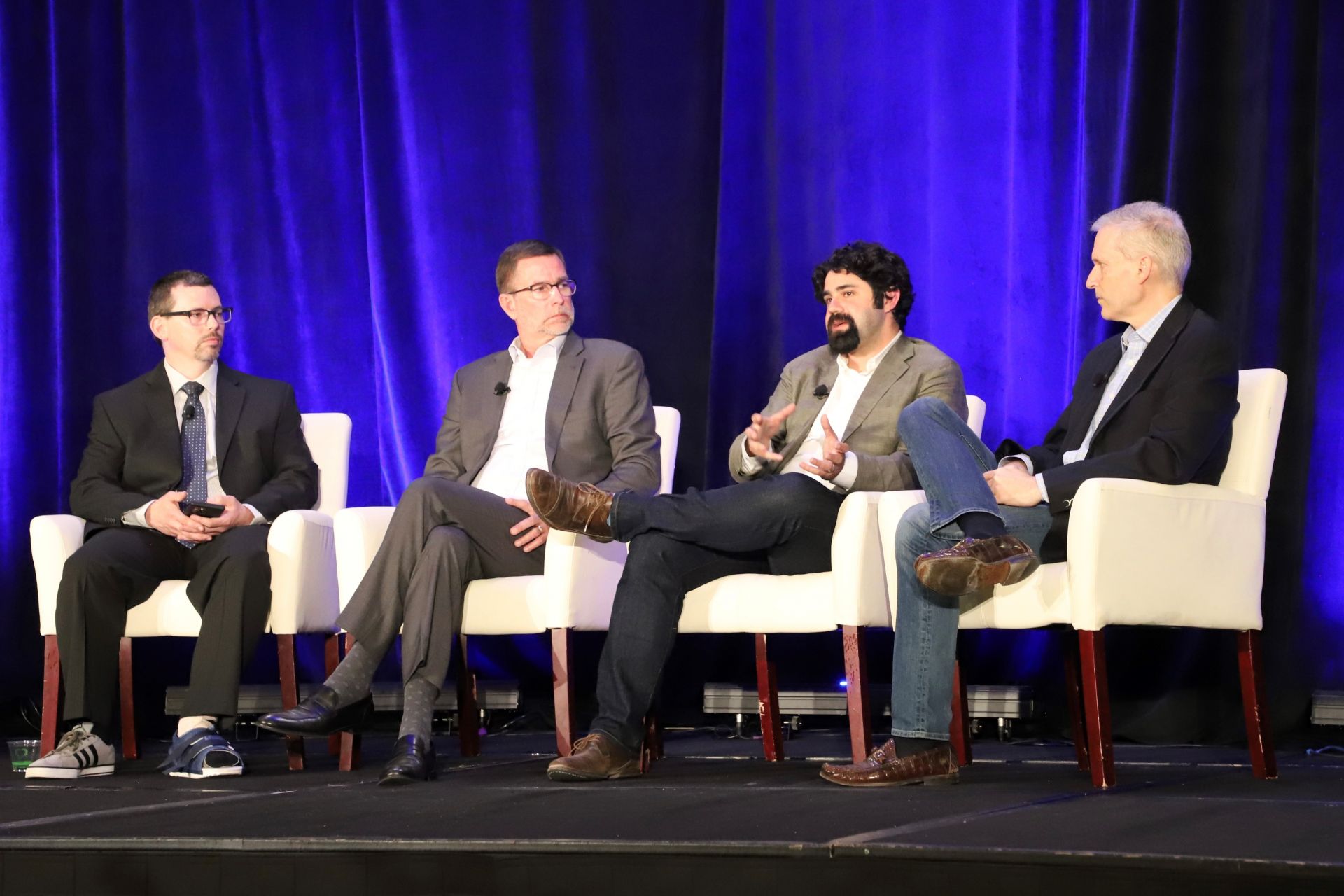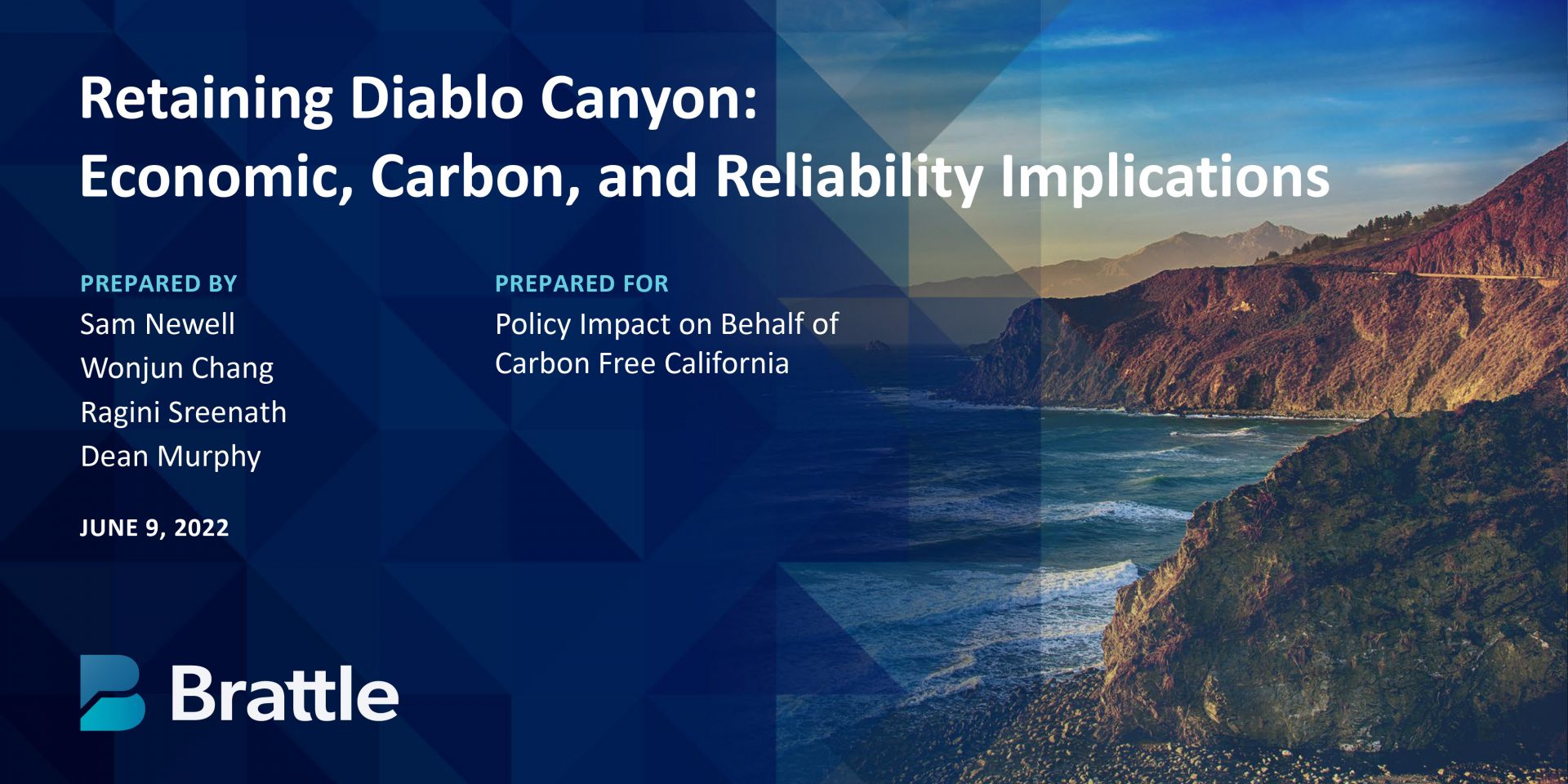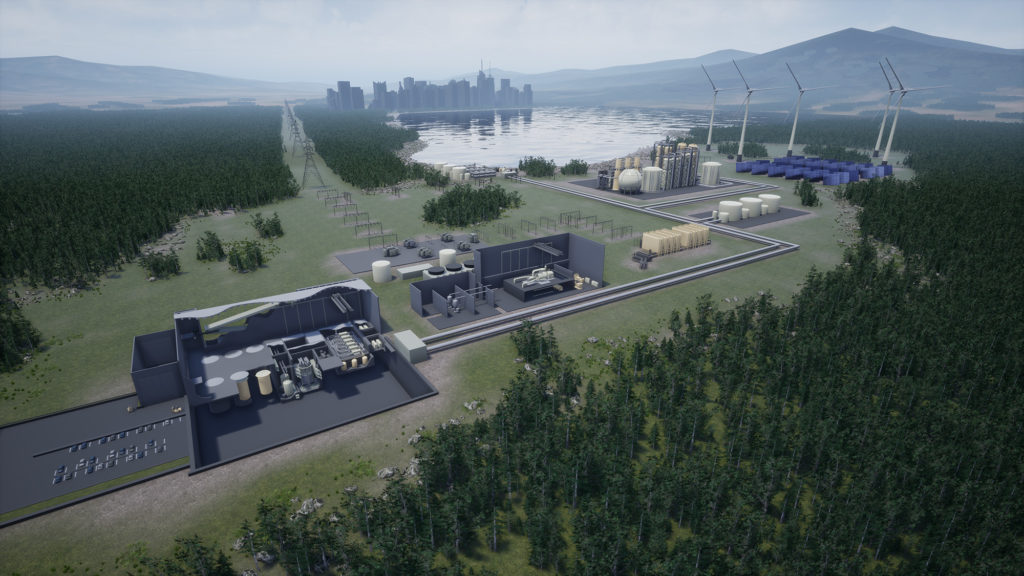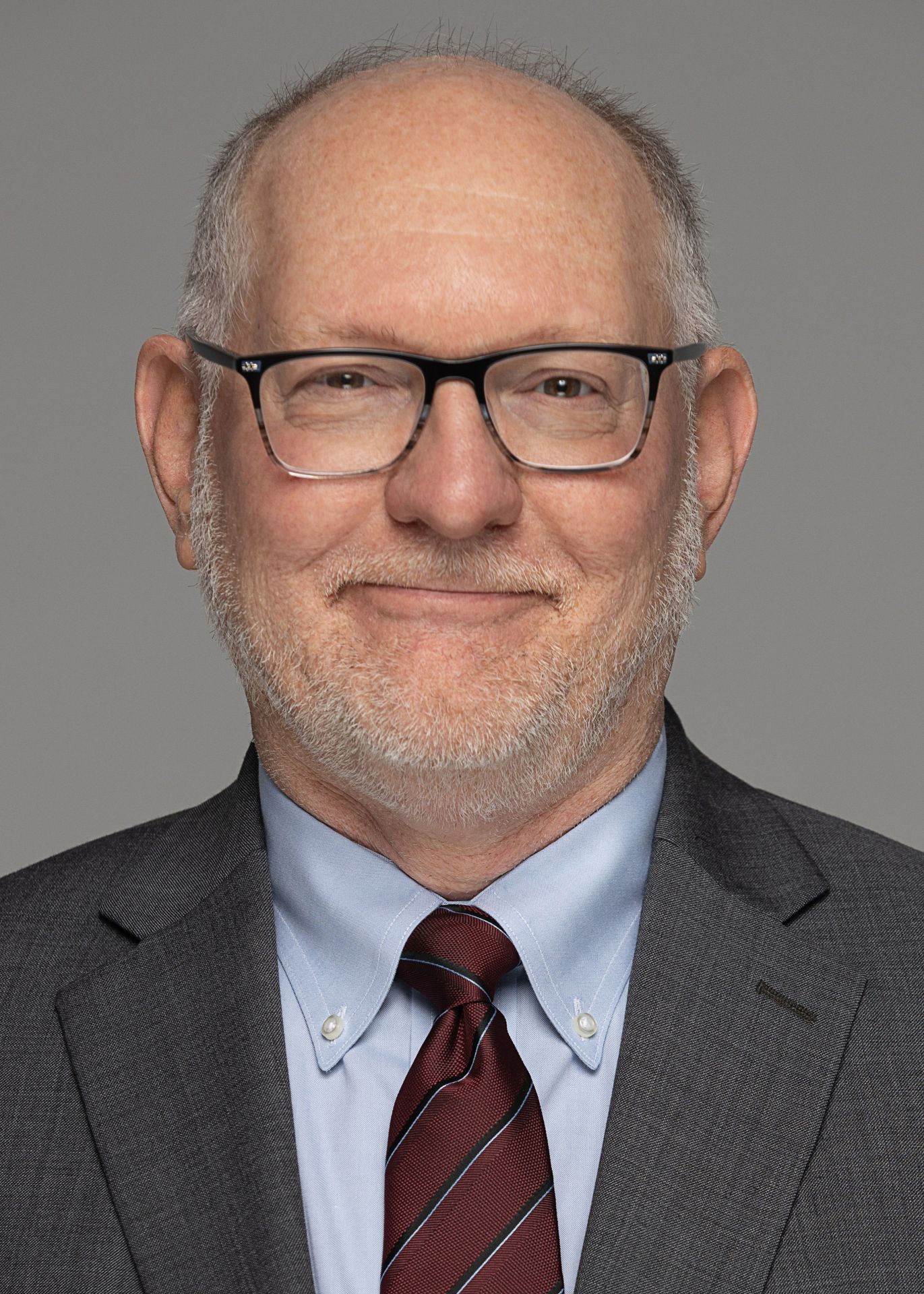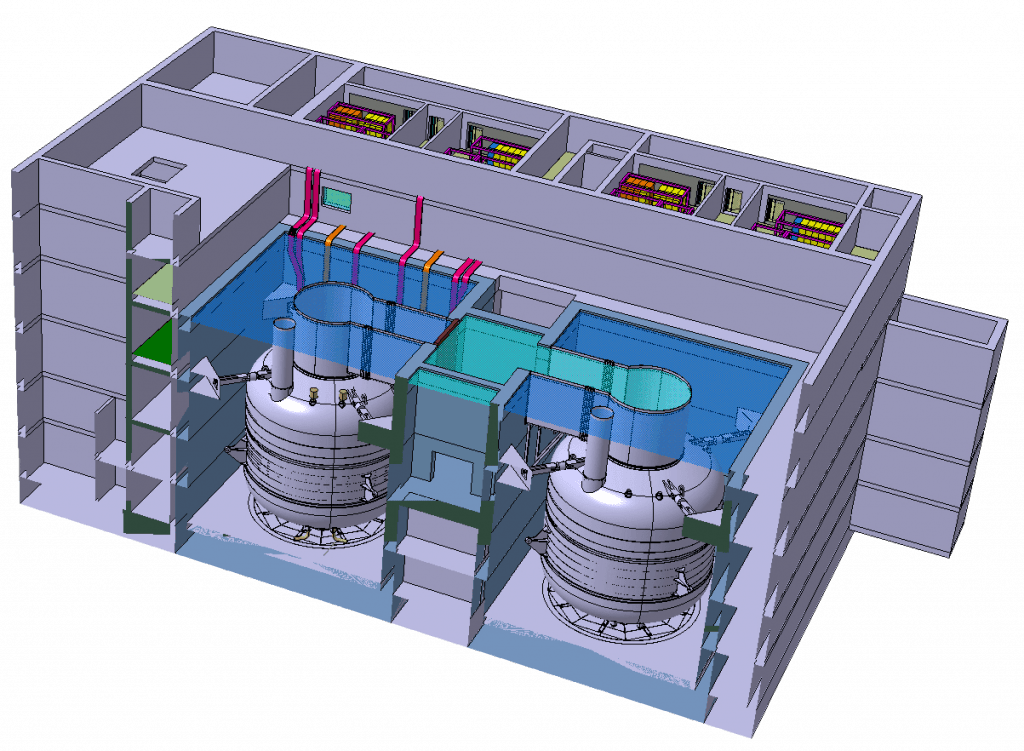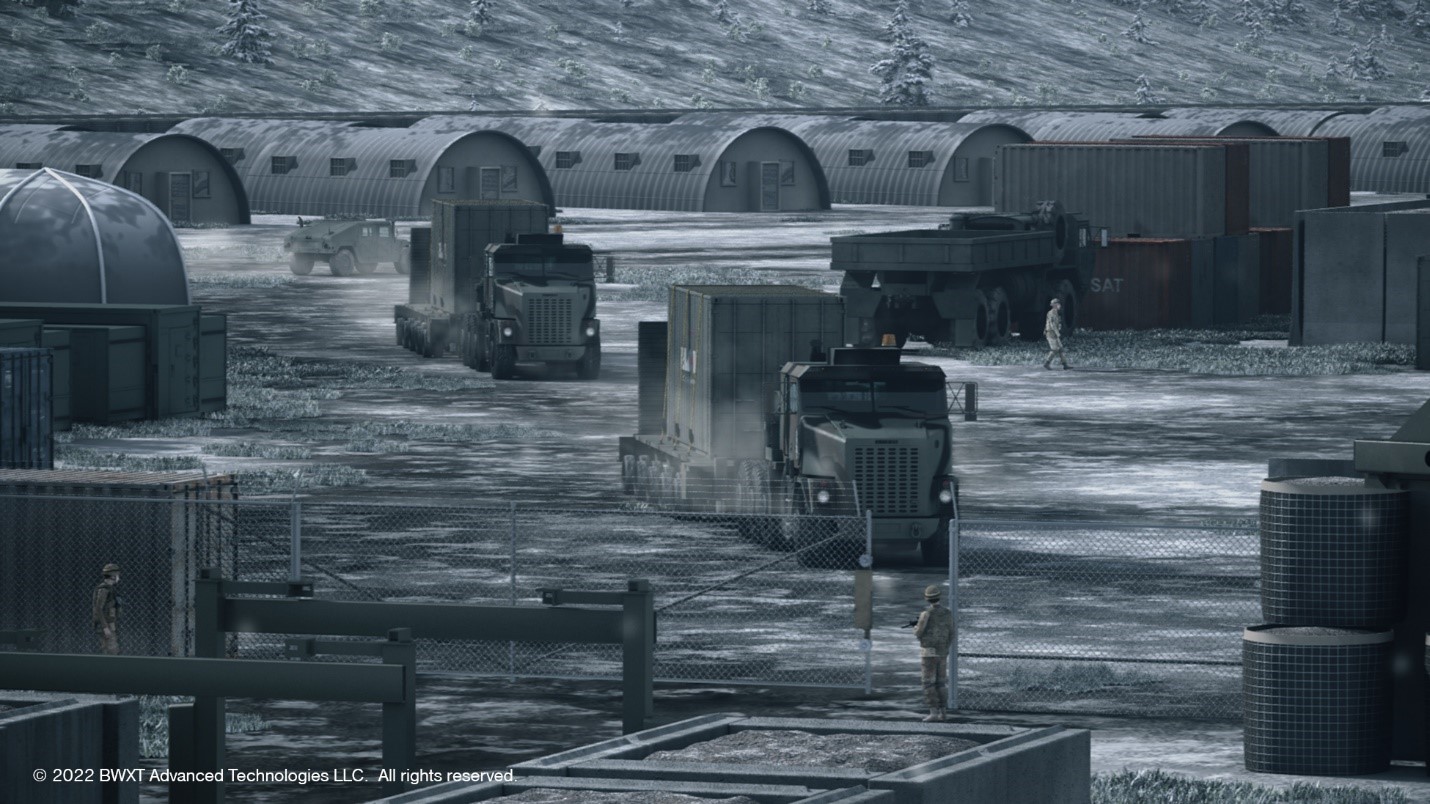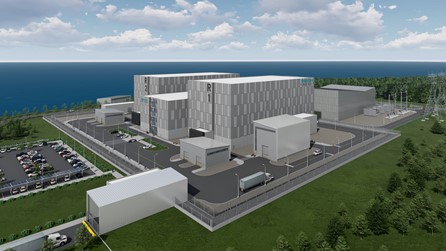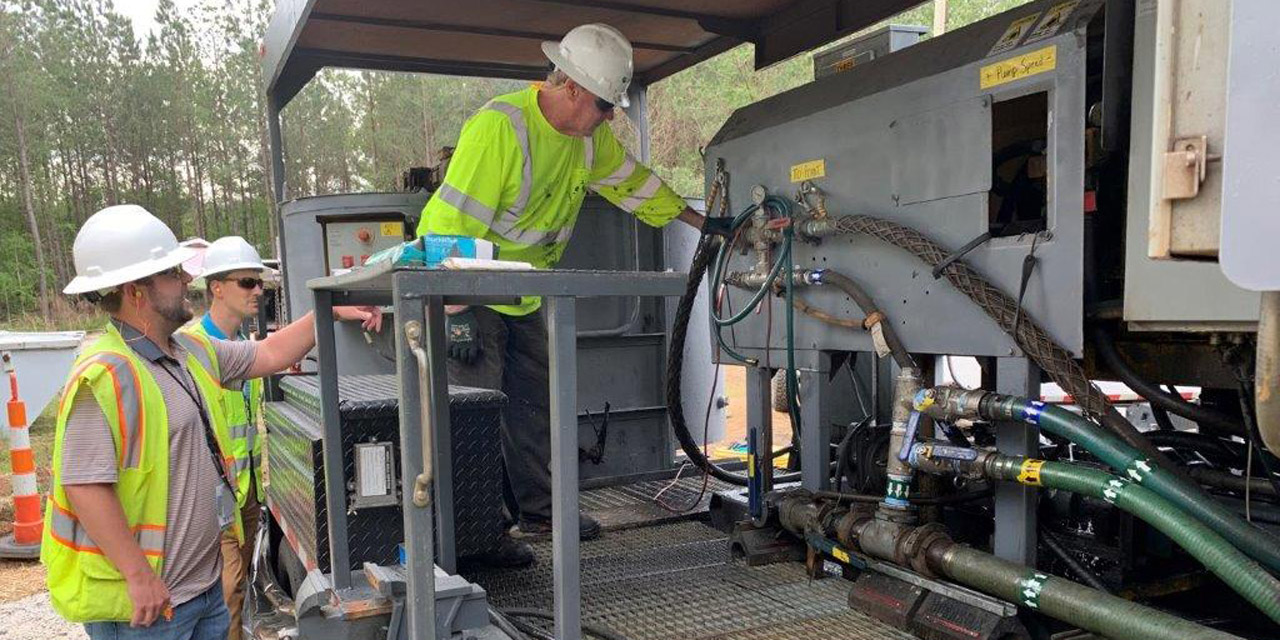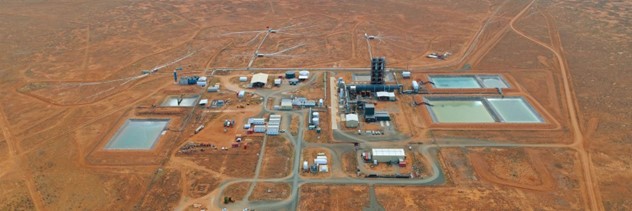Panelists (from left) Adam Stein, Jon Ball, Mike Laufer, and Michl Binderbauer during the Breaking Through: Assessing the Current State and Prospects of Nuclear Innovation in the Race to Decarbonize session at the ANS Annual Meeting.
If nuclear innovators are in a race to decarbonize, it is a race with one finish line—affordable, clean, and reliable power—and many ways to get there. Over 40 fission developers and 20 fusion developers are in the running, and while attendees of the June 13 ANS Annual Meeting executive session on Breaking Through: Assessing the Current State and Prospects of Nuclear Innovation in the Race to Decarbonize heard from representatives of just three of those companies, they presented very different designs and deployment approaches, aptly reflecting the broader diversity of nuclear power innovation.
Session chair Adam Stein, director of nuclear energy innovation at the Breakthrough Institute, welcomed representatives from an advanced non–light water reactor developer (Mike Laufer, Kairos Power), a small modular light water reactor developer (Jon Ball, GE Hitachi Nuclear Energy), and a fusion power developer (Michl Binderbauer, TAE Technologies). Together they explored the challenge of engineering a significant commercial scale-up of advanced nuclear technology by the end of the decade, tackling questions of cost, schedule, supply chain, regulation, and more.
A cutaway of the Integral Molten Salt Reactor and balance of plant. (Image: Terrestrial Energy)
Ammonia is a carbon-free energy carrier that could be produced using thermal energy from nuclear power plants. Terrestrial Energy announced June 9 that it has signed an agreement with engineering firm KBR to explore the use of its Integral Molten Salt Reactor (IMSR) for both hydrogen and ammonia production.
IAEA director general Rafael Mariano Grossi addresses workshop attendees. (Photo: IAEA)
The International Atomic Energy Agency convened a workshop last week to explore how nuclear techniques backed by the IAEA’s Zoonotic Disease Integrated Action (ZODIAC) initiative could be used to avoid outbreaks of monkeypox and Lassa fever. The meeting, held in Vienna, Austria, on the sidelines of the IAEA Board of Governors meeting, was organized to assist countries in using nuclear and related techniques to detect, mitigate, and understand the behavior of the viruses.
“It is important that we are reacting quickly, as things happen. I am happy that concrete work is being carried out on something before it becomes a very difficult problem,” said IAEA director general Rafael Mariano Grossi as he opened the one-day summit.
Concept art for the NUWARD plant. (Image: TechnicAtome)
French utility giant EDF has announced that its NUWARD small modular reactor design will be the case study for a European early joint regulatory review led by the French Nuclear Safety Authority (ASN). Also participating in the review process will be the Czech Republic’s State Office for Nuclear Safety (SUJB) and Finland’s Radiation and Nuclear Safety Authority (STUK).
Artist’s rendering of BWXT’s Project Pele transportable reactor modules arriving for set up and operation. (Image: BWXT)
BWX Technologies, Inc., will deliver the first microreactor in the United States under a contract awarded by the U.S. Department of Defense Strategic Capabilities Office (SCO), the company announced today. BWXT will have two years to build a transportable microreactor prototype to the SCO’s Project Pele specifications and deliver it to Idaho National Laboratory for testing under a cost-type contract valued at about $300 million.
Computer rendering of an IMSR400 plant. (Image: Terrestrial Energy)
The Nuclear Regulatory Commission and Canadian Nuclear Safety Commission have completed a first joint technical review of Terrestrial Energy’s Integral Molten Salt Reactor, the company announced earlier this week.
The IMSR was selected in December 2019 to be the first advanced non–light water nuclear reactor technology to be studied under an August 2019 NRC/CNSC memorandum of cooperation aimed at enhancing regulatory effectiveness through collaborative work on technical reviews of advanced reactor and small modular reactor technologies.
SRNS environmental engineers Bryce Garner (left) and Adam Willey (center) ask questions of lead operator Daniel Ferrell (right), from field services contractor Cascade Environmental, as he describes how equipment injects oil and iron into the Savannah River Site’s groundwater. (Photo: DOE)
In this week’s “EM Update,” the Department of Energy’s Office of Environmental Management (EM) reports that its contractor Savannah River Nuclear Solutions (SRNS) has successfully reduced degreasing solvents in the aquifer beneath the Savannah River Site in South Carolina using a technology that injects a form of iron and oil into groundwater.
“The oil attracts the Cold War[–era] cleaning solvents while the iron degrades and neutralizes the contamination,” said Shannan Lucero, SRNS manager for area closure projects.
A depiction of an electrolyzer from Bloom Energy. (Photo: Bloom Energy)
Using nuclear power technology to produce clean hydrogen is getting a visibility boost as the Department of Energy hosts a virtual three-day (June 6–8) Annual Merit Review and Peer Evaluation Meeting on the agency’s efforts to accelerate clean hydrogen production. On June 6, the DOE announced a notice of intent (NOI) to fund the Bipartisan Infrastructure Law’s $8 billion program to develop regional clean hydrogen hubs (H2Hubs) and the launch of a new Hydrogen Shot Incubator Prize that seeks “disruptive technologies” to reduce the cost of clean hydrogen production. That same day, Westinghouse Electric Company and Bloom Energy Corp. (a maker of solid oxide electrolyzer technology) announced a letter of intent to develop electrolyzers for use in the commercial nuclear power market and said they are “well positioned to support the U.S. Department of Energy’s developing hydrogen hubs.”
The Honeymoon uranium project in South Australia. (Photo: Boss Energy)
The board of Boss Energy Limited has made a “final investment decision” to develop the Honeymoon in situ uranium project in Australia, the Perth-based company announced last week. Boss said it will now accelerate engineering, procurement, and construction to ensure that Honeymoon—located in South Australia, near the border with New South Wales—remains on track for first production by December 2023, ramping up to a steady-state rate of 2.45 million pounds of U3O8 per year.
A group shot of Energoatom and Westinghouse personnel at the Khmelnytskyi nuclear power plant in Ukraine, where the first two AP1000 reactors under a recent agreement will be constructed. (Photo: Westinghouse)
The war in Ukraine notwithstanding, Westinghouse Electric Company has stepped up its partnership with Energoatom, Ukraine’s state-owned nuclear utility, signing agreements last week to supply all of the nuclear fuel for the country’s operating reactor fleet and to collaborate on the construction of nine AP1000 units for Ukraine, rather than the five earlier envisioned.
